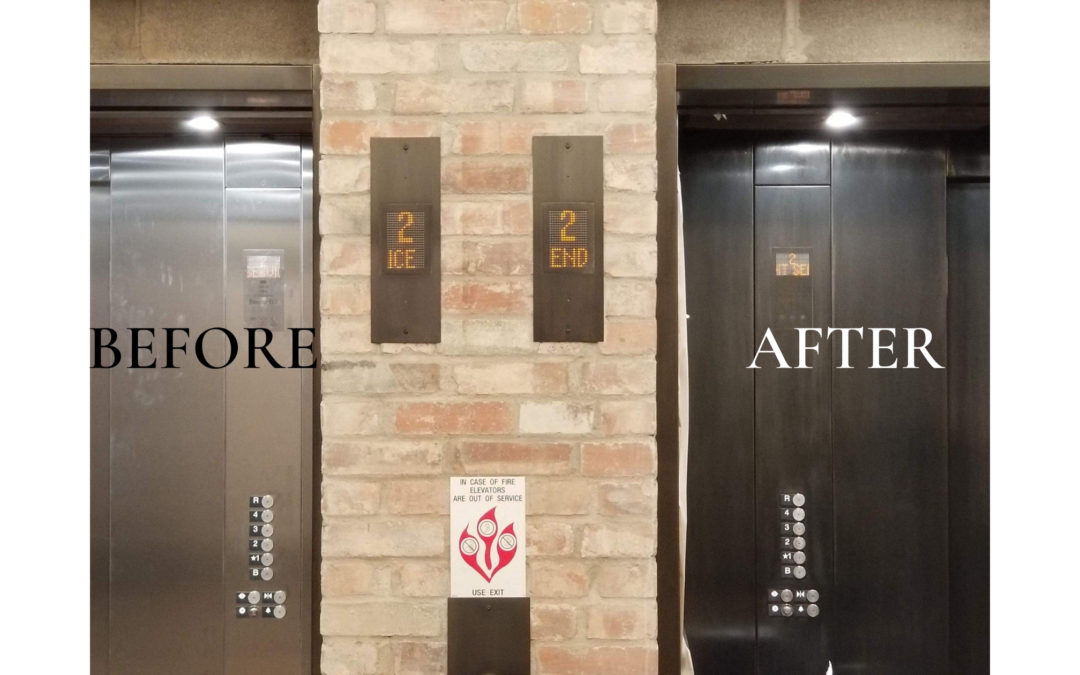Patina is an aging process that happens naturally when metal is exposed to the elements and use. When metal is left untreated, over time the metal oxidizes turning it a different color (i.e.: brown, black, or green), or it can darken the color of the metal. For example, cooper transforms from a shiny penny shade to a burnished brown, and then various shades of green. The natural chemical process of metal interacting with the elements, causing the patina, helps preserve the metal.
Like our chemistry class in high school, some of the outcomes are expected and others, not so much. When forcing a chemical process, it is equally important to then stop the process. If the reaction is not reversed, it will continue at a much more rapid rate than nature would allow. This can cause quite a few problems and loss of a beautiful finish. In addition to any chemicals used to force a patina, the environment also plays a part. The humidity in the air, temperature of the space and other chemicals already in the area affect the reactions Ultimately, the combination of all outside influences change the patinas as they are developed.
Patinas in the world of design have a little help from human hands to hurry that process along. It is possible to add acidity and alkalinity to the surface of a metal to create reactions. Although there are some fantastic faux painters out there, paint will never have the feel of a patina. Each metal has its own reflective quality and beauty that glows from within. It bounces the light and reflects the color differently on different planes.
For more information about patina and changing the look of metal surfaces, contact us today!

